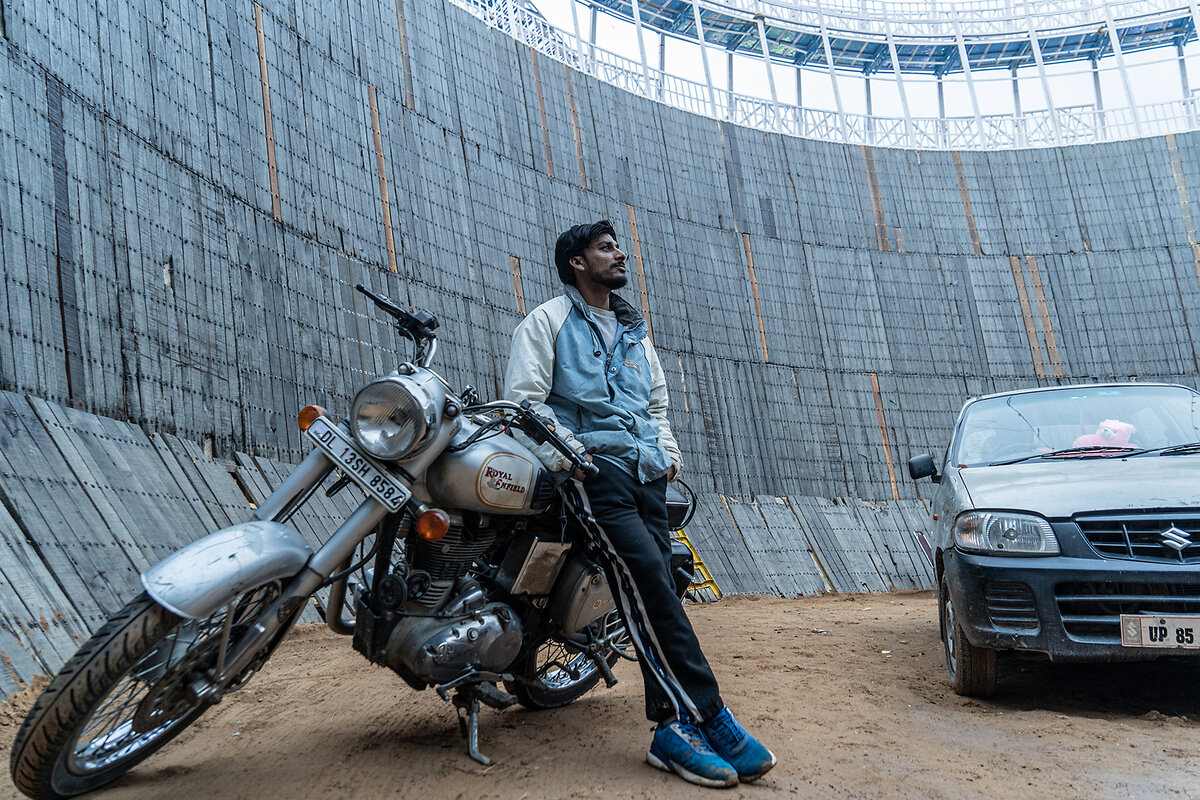India’s daredevils defy gravity in the Well of Death
Loading...
| Aligarh, India
Muhammad Faheem, a stunt performer in northern India, rides his motorcycle inside a 30-to-50-foot-diameter wooden cylinder formed like a barrel. The breathtaking show – known in Hindi as Maut ka Kuan, or Well of Death – brings a modern twist to classic tent circuses, with cars and motorcycles replacing animals and tightrope walkers.
Despite the modest wages, dangerous operational hurdles, and declining attendance, Mr. Faheem says he is passionate about trying to thrill the heart of every audience member who shows up.
Why We Wrote This
Some people seek out thrills, and others provide them. In India, stunt drivers ensure that audiences feel an adrenaline rush from death-defying performances.
“Every challenge we face, financial or logistical, is just another part of the act,” he explains. “It’s what makes the final applause so worth it.”
Expand the story to see the full photo essay.
When he was a teenager, Muhammad Faheem visited a festival in Delhi and watched gravity-defying performers drive up and around the steep walls of a cylindrical arena. In Hindi, the carnival attraction is known as Maut ka Kuan, or Well of Death, because performers risk falling off at any moment.
“I wasn’t scared; I was drawn to it,” Mr. Faheem says. “It felt like the roaring engines and the cheering crowd were saying, ‘You belong here.’”
Today, Mr. Faheem is one of those stunt performers in northern India, riding his motorcycle inside a 30-to-50-foot-diameter wooden cylinder formed like a barrel. The breathtaking shows – which were once very popular in the region but now pull in smaller crowds – bring a modern twist to classic tent circuses, with cars and motorcycles replacing animals and tightrope walkers.
Despite the modest wages and dangerous operational hurdles, Mr. Faheem remains passionate about thrilling the heart of every audience member.
“Every challenge we face, financial or logistical, is just another part of the act,” he says. “It’s what makes the final applause so worth it.”












